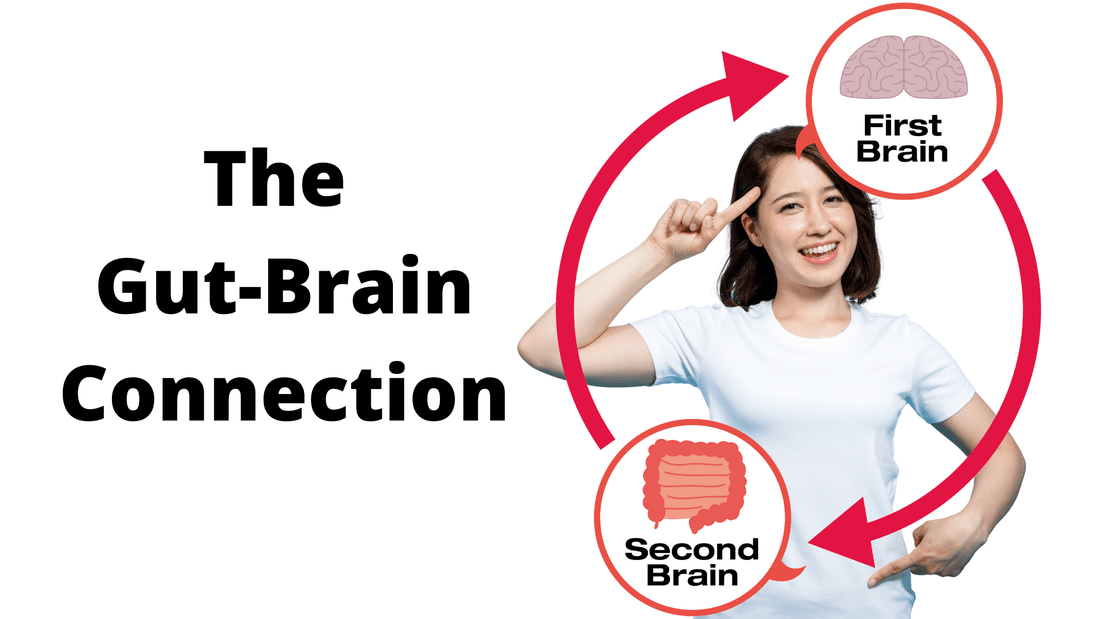
Gut feeling: The second brain in our body
Naturally YoursShare

Most of the diseases emerge in the gut and terminate in the gut. So, nourish your gut with nutritious food to amplify disease-free years in your life.
Alliance formed between “Gut and Brain” operate all the functioning of the body. The human gut is supplied by the enteric nervous system (ENS), which is a dense network of neuronal connections (Gershon, 1981).
ENS is the huge and most intricate segment of the peripheral nervous system that traverses across the wall of the gut and composed of about 400-600 million neurons (Gabella, 1979; Rao and Gershon, 2018).
The majority of the gastrointestinal functions range from digestion, metabolism, absorption, hormone regulation, immunological protection, and many other are modulated by enteric nervous system and it communicates two-way with central nervous system of the brain and spinal cord (Kulkarni et al, 2018).
However, it has the propensity to work independently of the Central nervous system that’s why it is acknowledged as the “second brain”.
Even there are certain peptide hormones secreted from the gut that regulate the eating behavior. These hormones act on neurons located in specific regions of the brain which control hunger.
Basically, “How HEALTHY we are, both mentally or physically” depends upon “How HEALTHY our gut is” which consequently depends on “How we FEED our gut”. So, “WHAT WE EAT” explicitly or implicitly helps in dodging top-rated diseases or disorder and adds healthy years in your life.
How does the interaction between gut, gut microbiome and brain influence our health
We are not surviving alone on this earth rather we are always staying in close association with our inner ecosystem which is composed entirely of microbes. So, it means a small world of microbes resides in the body.
The human gut harbors trillions of bacteria (3.8 × 1013 bacteria) therefore you are not only eating for yourself but you are also eat to feed your inner microbial ecosystem.
Positive effects of good bacteria

Even, the newborn baby is also loaded with bacteria, i.e. good bacteria. Approximately 30% of infant’s gut is a room for a microbial population that directly comes from the mother’s breast milk. So, the notion that breast milk is sterile is wrong. It contains healthy bacteria which make a route to infant’s gut.
These bacteria travel to the infant’s gut via dendritic cells (i.e. special cells from mother’s immune system) that collect bacteria from mother’s gut and transported to the milk ducts of the breast then, ultimately to infant gut.
This demonstrates how diet and antibiotic intake influences both mother and baby.
Studies have revealed that infant who fed on formula food have different microbial compositions compared to infant who have been fed on formula feed for about six months after delivery.(Blackburn et al, 2017;Wojcicki et al, 2016).
Another example of beneficial bacterial live in our gut is Akkermansia muciniphila which constitute 1-3% of all bacteria that reside in the gut microbiome.
It has a small population but very impactful because of its beneficial effects. As it could alleviate blood glucose metabolism, improve immune system, reduce gut inflammation, and help counteracting obesity or other metabolic diseases (Schneeberger et al, 2015).
There are certain fruits like pomegranate and cranberries that may promote the growth and survival of Akkermansia.
Negative effects due to disturbed gut microbiota
A disrupted microbial population known as dysbiosis may result in serious health conditions ranging from obesity, kidney diseases to metabolic disorders like PCOS, diabetes, and few more.
Besides, disturbed gut microbiota may also be linked to intestinal inflammation and inflammatory bowel diseases (IBD).
Factors that affect the Gut microbiota
The factors that might be associated with gut dysbiosis are diet, environment stress, antibiotic administration, altered sleep cycle, sedentary lifestyle, and psychological stress (Lobionda et al, 2019).
Further, studies have also shown that prolonged intake of high fat diets mainly high in saturated fat are linked with chronic intestine inflammation in mice and elevate the incidence of Inflammatory Bowel Disease (Kin et al, 2012; Ding et al, 2010).
Diets high in fat instigate the growth of bacteria Firmicutes and Proteobacteria which causes inflammation (Martinez-Guryn et al, 2018).
While the growth of several bacteria belonging to the genre such as Lactobacillus, Bifidobacterium and Faecali bacterium may reduce intestinal inflammation by decreasing the production of pro-inflammatory cytokine and augmenting the generation of anti-inflammatory cytokines.
These are usually diminished due to high-fat diets (Manichanh et al, 2012; Sun et al, 2016; Wan et al, 2019).
Conclusion
The Gut, gut microbiome and brain work in close association with each other. Synchronization of this gut-gut microbiota-brain alliance is of utmost importance for the proper functioning of the body.
Like a brain, our gut is supplied with the enteric nervous system which works independently of the central nervous system and works in close association with the brain.
Because of this reason, we experienced nausea, butterfly feelings, anxiety, vomiting, and diarrhea in stressful conditions like in interviews, during exam time, or in any situation. Here, the stress signal travels from gut to brain or vice-versa.
Gut microbiota, an inner ecosystem also influences our health. There are certain genre of microbes that incite positive impact on our health while others normally called “bad bacteria” or pathogenic microbes and their toxic metabolites like clostridium difficile impart negative effects, namely, inflammation, infection, metabolic disorders, cardiovascular diseases, and many others.
Diet has a direct impact on our gut microbiota that’s why diet high in dietary fibers (cereals, pulses, nuts, fruits and vegetables) and low in refined flours, sugars, saturated fats and red meats flourish the growth of a healthy microbial population and may prevent you from various chronic top-ranked diseases. Henceforth, “What you eat” will shape your gut.
References
Blackburn, E. H. (2017). The Science of Cells That Never Get Old. TED.
Ding, S., Chi, M. M., Scull, B. P., Rigby, R., Schwerbrock, N. M., Magness, S., & Lund, P. K. (2010). High-fat diet: bacteria interactions promote intestinal inflammation which precedes and correlates with obesity and insulin resistance in mouse. PloS one, 5(8), e12191.
Gabella, G. (1979). Innervation of the gastrointestinal tract.In International review of cytology (Vol. 59, pp. 129-193). Academic Press..
Gershon, M. D. (1981). The enteric nervous system. Annual review of neuroscience, 4(1), 227-272.
Kim, K. A., Gu, W., Lee, I. A., Joh, E. H., & Kim, D. H. (2012). High fat diet-induced gut microbiota exacerbates inflammation and obesity in mice via the TLR4 signaling pathway. PloS one, 7(10), e47713.
Lobionda, S., Sittipo, P., Kwon, H. Y., & Lee, Y. K. (2019).The Role of Gut Microbiota in Intestinal Inflammation with Respect to Diet and Extrinsic Stressors. Microorganisms, 7(8), 271. https://doi.org/10.3390/microorganisms7080271
Manichanh, C., Borruel, N., Casellas, F., &Guarner, F. (2012).The gut microbiota in IBD. Nature reviews Gastroenterology &hepatology, 9(10), 599-608.
Martinez-Guryn, K., Hubert, N., Frazier, K., Urlass, S., Musch, M. W., Ojeda, P., ...& Reardon, C. A. (2018). Small intestine microbiota regulate host digestive and absorptive adaptive responses to dietary lipids. Cell host & microbe, 23(4), 458-469.
Rao, M., &Gershon, M. D. (2018). Enteric nervous system development: what could possibly go wrong?. Nature Reviews Neuroscience, 19(9), 552-565.
Schneeberger, M., Everard, A., Gómez-Valadés, A. G., Matamoros, S., Ramírez, S., Delzenne, N. M., &Cani, P. D. (2015). Akkermansiamuciniphila inversely correlates with the onset of inflammation, altered adipose tissue metabolism and metabolic disorders during obesity in mice. Scientific reports, 5,16643.
Sender, R., Fuchs, S., and Milo, R. (2016). Revised estimates for the number of human and bacteria cells in the body. PLoS Biol. 14:e1002533. doi: 10.1371/journal.pbio.1002533.
Sun, J., Qiao, Y., Qi, C., Jiang, W., Xiao, H., Shi, Y., & Le, G. W. (2016). High-fat-diet–induced obesity is associated with decreased antiinflammatory Lactobacillus reuteri sensitive to oxidative stress in mouse Peyer's patches. Nutrition, 32(2), 265-272.
Tap, J., Mondot, S., Levenez, F., Pelletier, E., Caron, C., Furet, J. P., et al. (2009). Towards the human intestinal microbiota phylogenetic core. Environ. Microbiol. 11, 2574–2584. doi: 10.1111/j.1462-2920.2009.01982.x.
Wan, Y., Wang, F., Yuan, J., Li, J., Jiang, D., Zhang, J., ...&Zheng, J. (2019). Effects of dietary fat on gut microbiota and faecal metabolites, and their relationship with cardiometabolic risk factors: a 6-month randomised controlled-feeding trial. Gut, 68(8), 1417-1429.
Wojcicki, J. M., Heyman, M. B., Elwan, D., Lin, J., Blackburn, E., &Epel, E. (2016). Early exclusive breastfeeding is associated with longer telomeres in Latino preschool children. The American Journal of Clinical Nutrition, 104(2), 397-405.
ABOUT THE AUTHOR

Neha Singh, Msc(Hon.) Food and Nutrition
Neha is a sports nutritionist who loves to write on topics related to nutrition and encourage healthy eating for a wholesome lifestyle.
